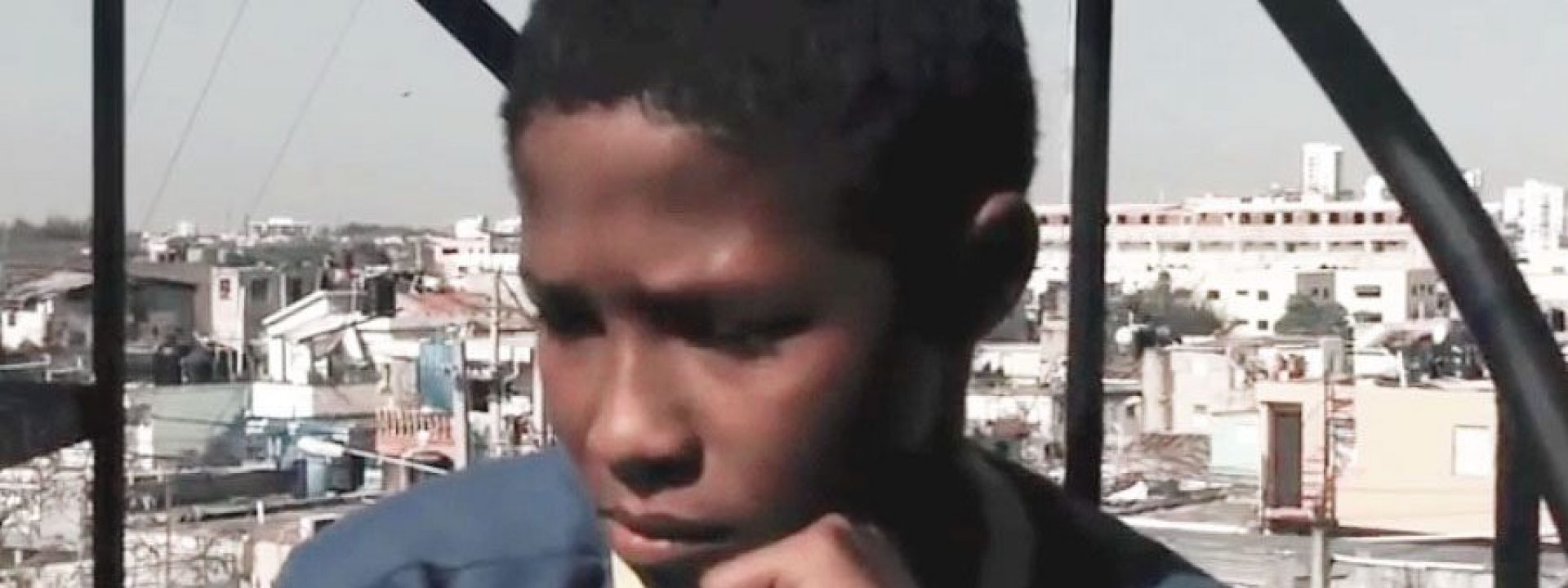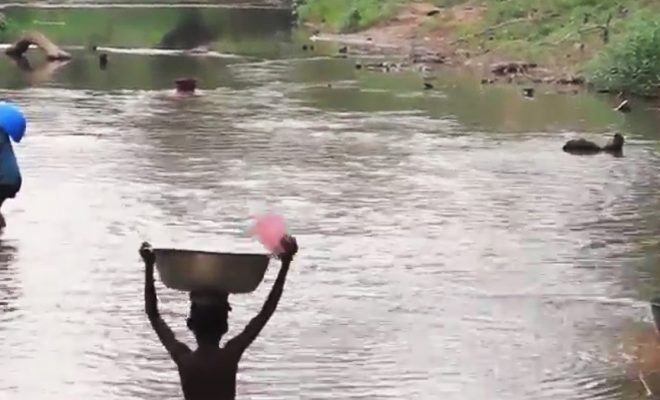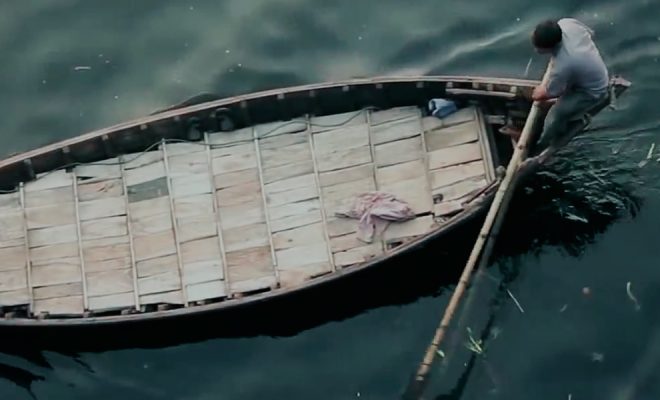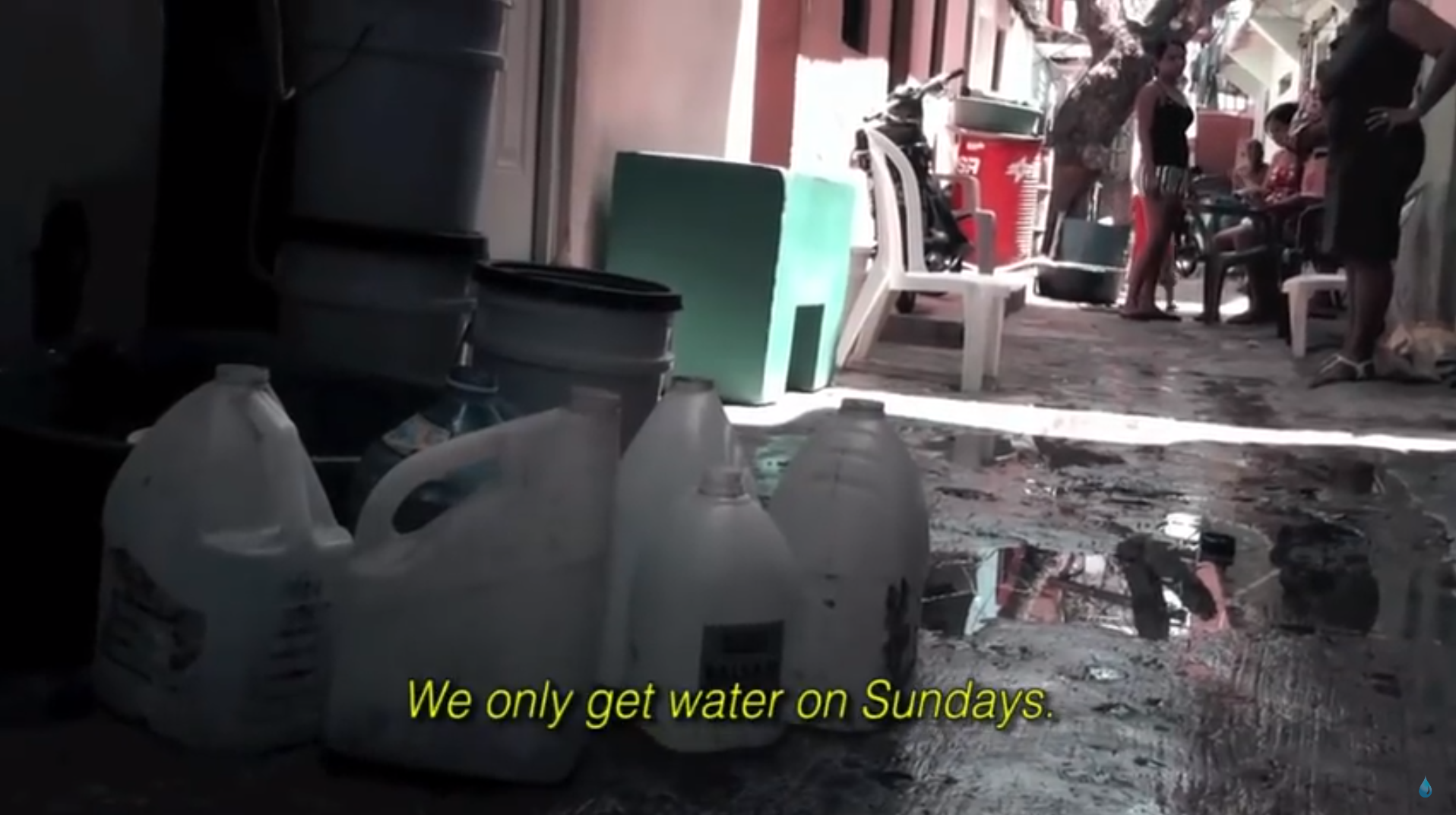
Best micro-documentary of the 2013-2014 WAWFF edition of the We Art Water Film Festival.
At 13, Wilito has become an expert in water supply and sanitation. In Los Praditos, electricity arrives every Sunday at noon, enabling water to flow from the pipes with the pressure needed to fill the tanks located in the rooftop terraces. At 3 p.m., the power supply ceases and the darkness of the nights joins the dryness of the taps and community fountains.
The family and neighbours of the building where Wilito lives need to live and keep a dignified level of sanitation until the following Sunday with the water in the tank and what they have been able to collect in buckets and drums.
This is how Wilito and his family have learned to dose their water for cooking and drinking, to flush the toilet with the minimum amount of water each time, to keep the tank in good condition to prevent the water from going bad; their lives depend on all of it…
This is the routine of most inhabitants of Los Praditos and of many cities in the Dominican Republic that have been overwhelmed by uncontrolled migratory movements from rural areas due to a poor distribution of wealth.
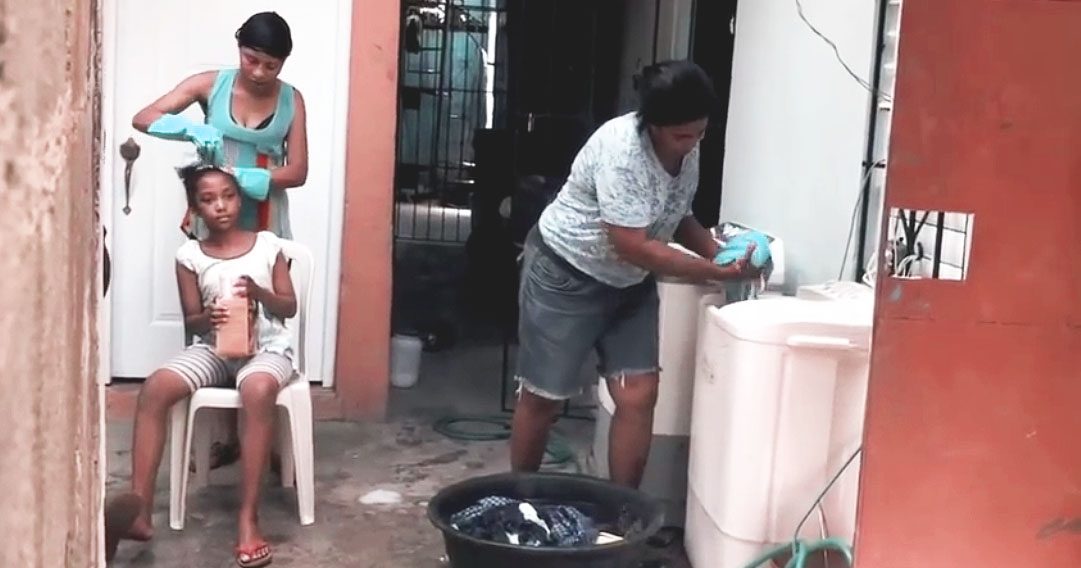
67% of the population of the Dominican Republic lives in urban areas that are also seeing their population increase due to Haitian migrants who arrive in a situation of extreme poverty. In addition, the country is periodically affected by the destructive action of the Atlantic hurricanes, phenomena that climate change will increase in intensity.
Although the Dominican Republic has experienced strong economic growth in recent years, mainly due to tourism, the imbalances have not been resolved. According to the Human Development Index (HDI) of the United Nations Development Programme (UNDP), the nearly 10 million inhabitants of the Caribbean country suffer from an overall poverty level of 48.5% and extreme poverty of 4.4%.
Censuses by the Dominican National Statistics Office provide data for the images in the short film: 68.79% of the homes in the country, where 71% of the Dominican population live, do not have the conditions for a dignified life and there is often overcrowding as several families share the same room. The coverage of drinking water and basic sanitation has declined in the last two decades and the situation that occurs in Los Praditos on Sundays is repeated on other days in other neighbourhoods and cities of the country; the electricity supply is not enough and the sanitation infrastructure still leaves the Sustainable Development Goals far behind.
What happens in Los Praditos is unfortunately repeated in many cities in the developing world, where providing slums with decent water and sanitation conditions is a problem that is exacerbated by migration to cities because of an imbalance that climate change will worsen. It is a global alert that affects us all.


